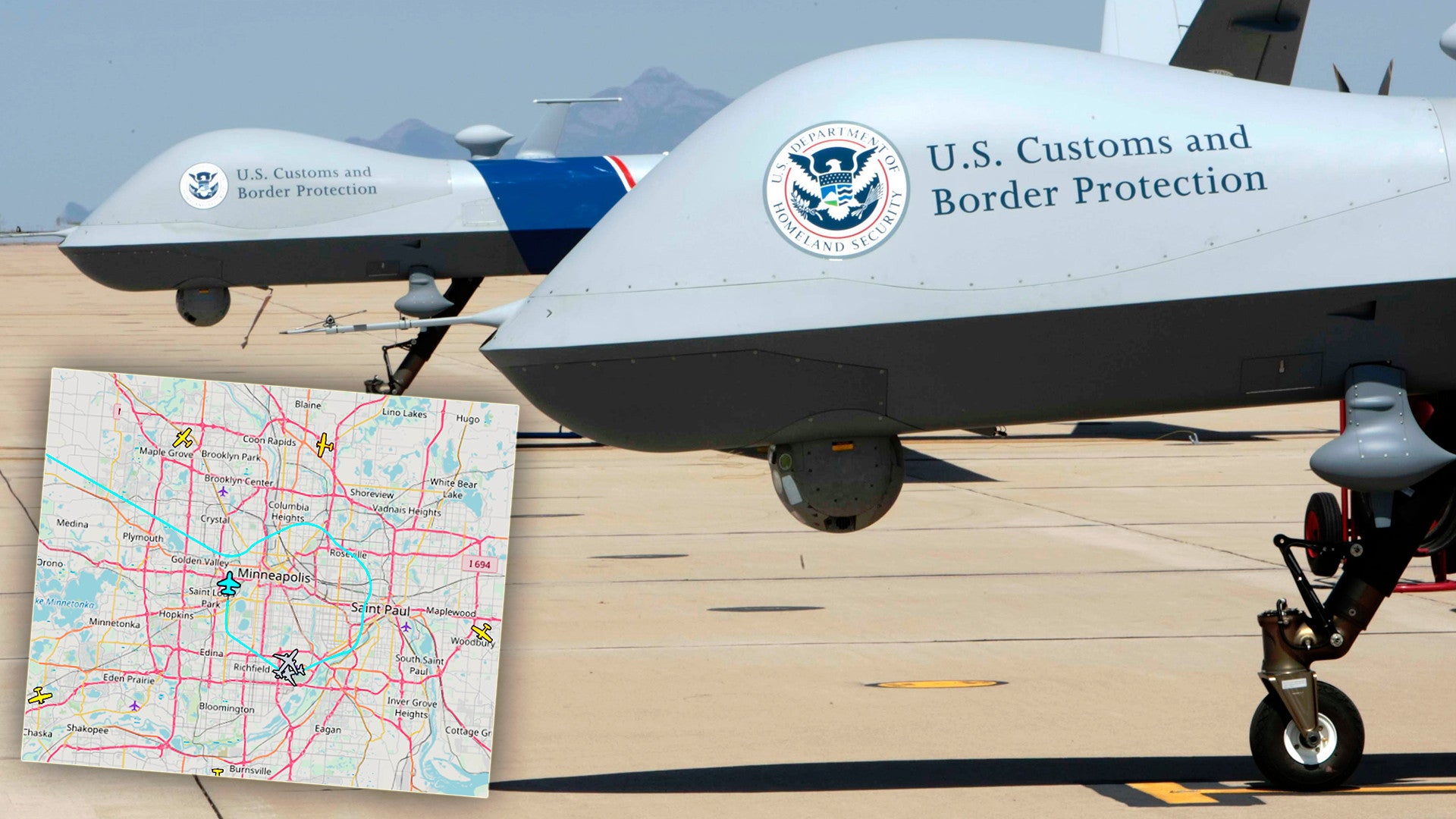A U.S. Customs and Border Protection Predator B drone, also known as the Reaper, is presently orbiting around Minneapolis, Minnesota. The city has been in the grips increasingly violent protests in recent days over the killing of resident George Floyd while he was being arrested by members of the Minneapolis Police Department earlier this week.
George Floyd, an African American, died on May 25, 2020, after Minneapolis Police Department Officer Derek Chauvin, who is white, kneeled on his neck for at least seven minutes. Police were in the process of arresting Floyd over his alleged attempt to use counterfeit $20 bills at a nearby deli. Chauvin was subsequently fired and has now been taken into custody on charges of murder.
This incident has touched off protests against racially motivated policing, as well as rioting, in various cities across the country and has further inflamed tensions arising from similar incidents elsewhere. The violence in Minneapolis has become especially pronounced, with one group notably setting fire to the Minneapolis Police Department’s Third Precinct building last night after officers evacuated.
Journalists and plane spotters using online flight tracking software first noticed the drone flying in a hexagonal route around the city at around 20,000 feet on May 29, 2020. Customs and Border Protection (CBP) has around eight Predator Bs in various configurations, all of which are unarmed. This agency had acquired 10 of these unmanned aircraft by 2012, but lost one in an accident over the Pacific Ocean in 2014 and another in a crash at Grand Forks Air Force Base just earlier this month. The Predator B, which drone maker General Atomics makes, is part of a family of unmanned aircraft that also includes the U.S. Air Force’s MQ-9 Reapers.
The drone’s callsign, CBP 104, identifies it as one of CBP’s older Predator B types, which are configured for overland surveillance. The primary sensors on these drones are electro-optical and infrared full-motion video cameras in a turret under the nose, though they can also capture still imagery using the Lynx synthetic aperture radar. They also have data links capable of sending this video and imagery back to control stations on the ground in near real-time.
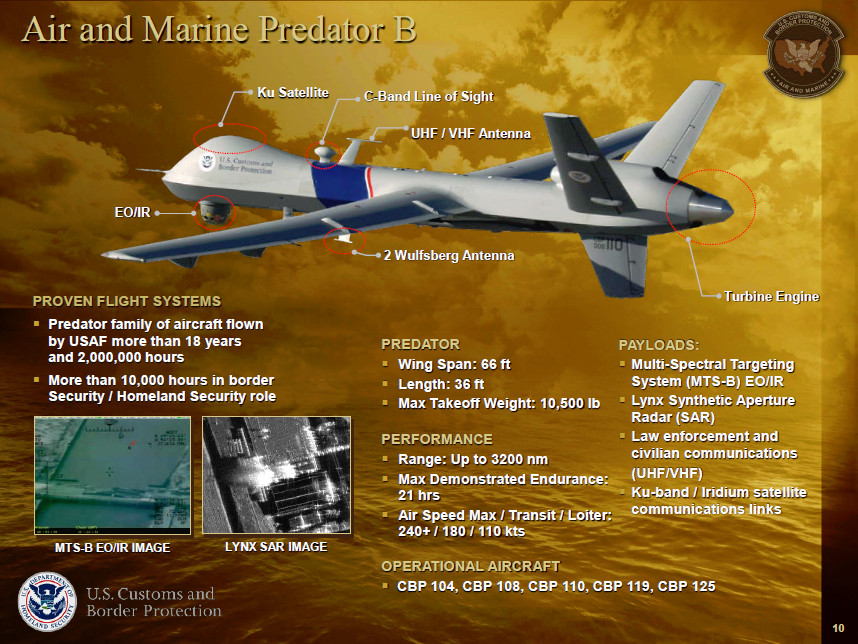
Other avialable data indicates that this particular unmanned aircraft is operating from Grand Forks Air Force Base. CBP Predator Bs typically fly from this base to conduct patrols along the U.S.-Canadian border.
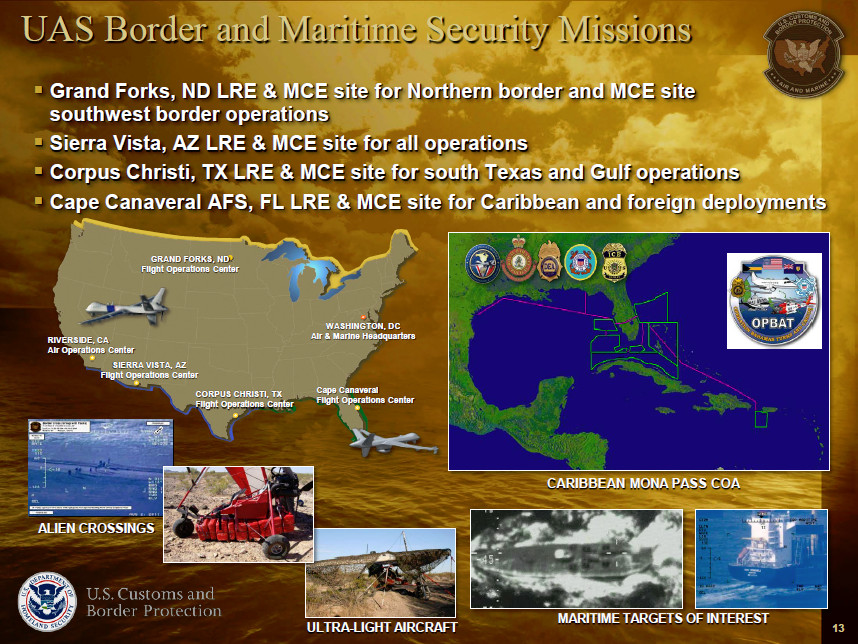
The unmanned aircraft’s ability to stay in the area for up to 21 hours at a time would make it an ideal asset for persistently monitoring the protests and rioting across Minneapolis. It could help law enforcement personnel best focus their resources in response to developments they might not otherwise be able to see and to generally document the situation as it continues to evolve.




The exact authority that CBP is operating under in order to support state and local officials is unclear. The agency does have controversial authority to conduct various activities within the United States inside a 100-mile-deep buffer area along the country’s borders, but Minneapolis is outside that defined area.
A 2013 edition of the National Guard Bureau’s Incident Awareness and Assessment Handbook, which covers manned and unmanned intelligence, surveillance, and reconnaissance aircraft across the U.S. government that could be made available during various domestic contingencies, does not specifically touch on general domestic unrest. However, this document, which the author previously obtained via the Freedom of Information Act, does list CBP’s Predator B as assets that could be called upon to help in the aftermath of natural and man-made disasters, as well as terrorist attacks. Minnesota Governor Tim Walz has already activated the state’s National Guard to help with the response to the situation in Minneapolis.
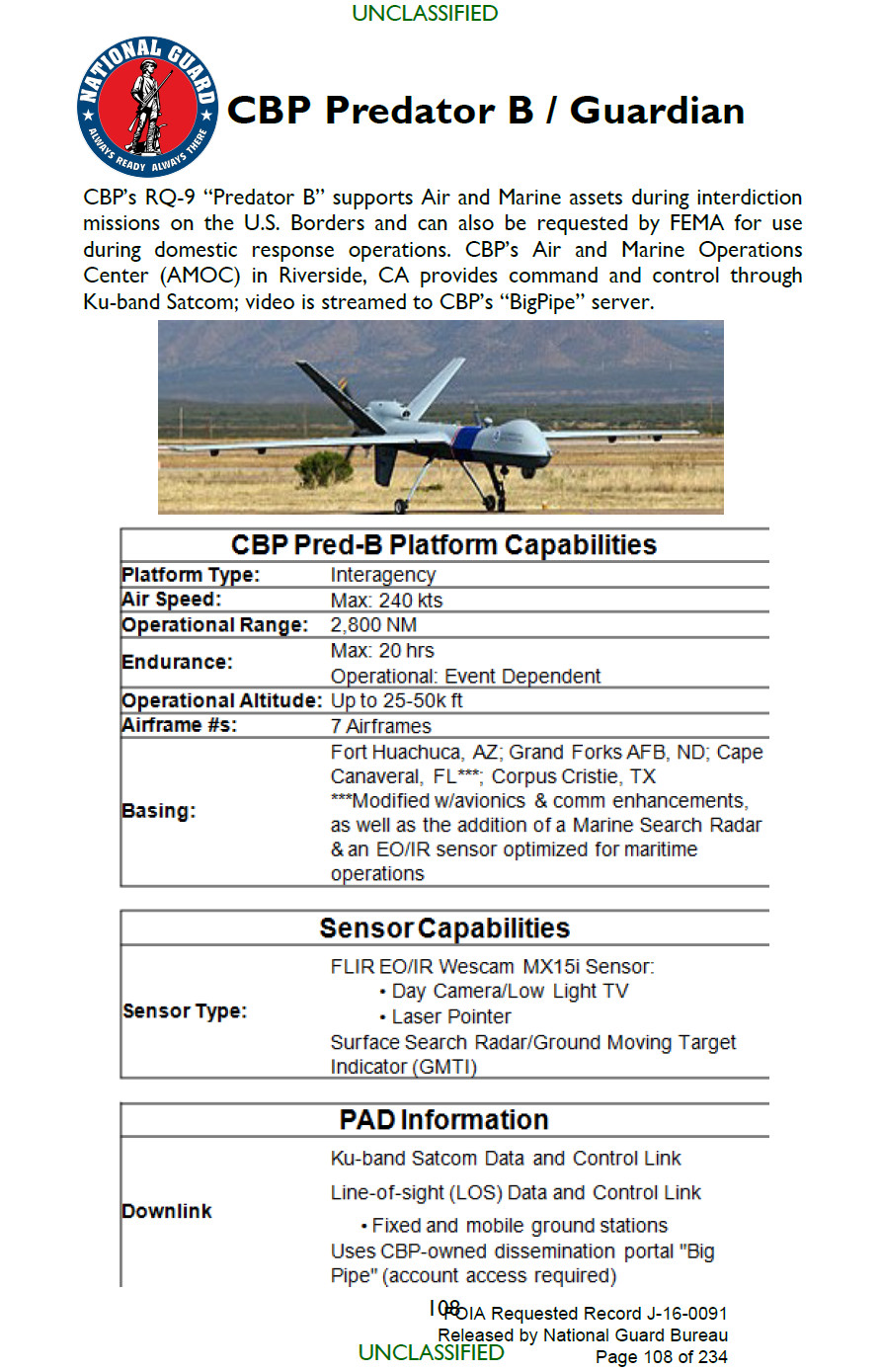
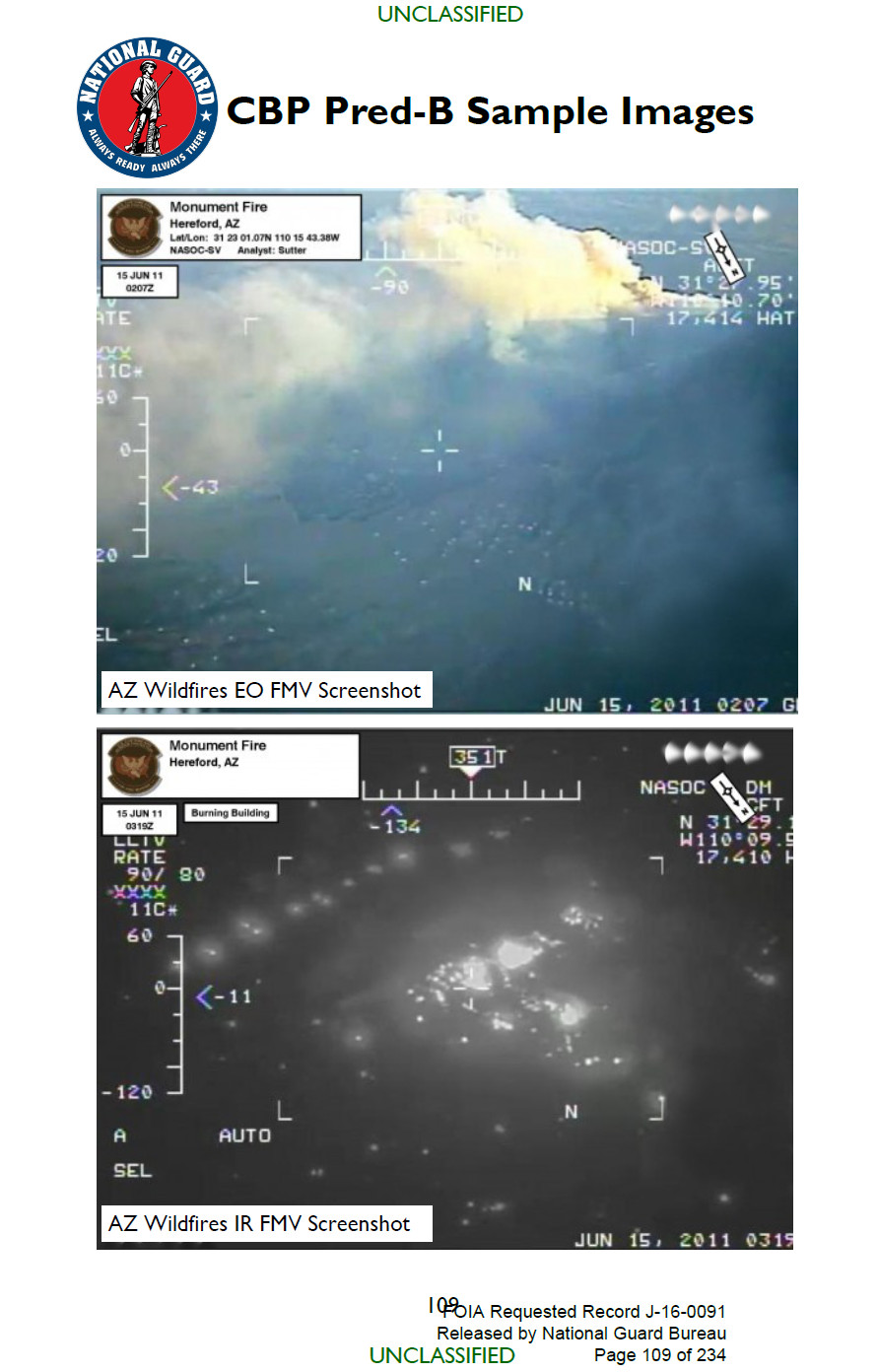
Regardless, this would not be the first time aerial surveillance assets have been employed in response to protests and rioting in the United States, though. In 2015, the Federal Bureau of Investigation notably employed manned aircraft to conduct persistent surveillance missions over Baltimore, Maryland during the protests in the wake of the police killing of Freddie Gray.
The Maryland Army National Guard also made RQ-7B Shadow unmanned aircraft available as part of its support to state and local authorities in response to that situation, dubbed Operation Baltimore Rally, though it’s unclear if they were employed to monitor the protests. The author previously obtained this information via the Freedom of Information Act. National Guard aviation assets may be available again for use over Minneapolis now.
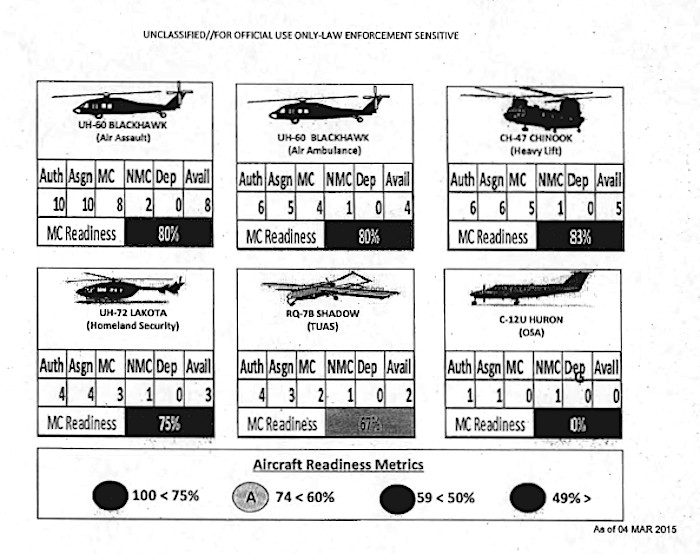
The use of persistent aerial surveillance for law enforcement purposes has long been a controversial topic. Civil liberties advocates say these and other mass surveillance activities violate rights to personal privacy and undermine constitutional protections against unlawful searches.
CBP’s deployment of one of its Predator Bs over Minneapolis is almost certain to further fuel that debate. Depending on how the situation in the city, as well as other locations across the country that are now experiencing protests and rioting in response to the killing of George Floyd, we may well see other aerial surveillance assets employed, as well.
We will update this story as more information becomes available.
Update: 4:20 PM EST—
The Predator B appears to have left the area after being overhead for a little over an hour.
Also, the original version of this article stated that Minneapolis was outside of CBP’s 100-mile-wide border buffer area. Other reports have said that, based on how the distance from an “external boundary” is measured, it is actually within that zone. This story has been updated to reflect this incongruity.
Update: 5:20 PM EST—
CBP 104 has now moved to an area much closer to the Canadian border, where it appears to be conducting a more routine surveillance mission.
Update: 6:45 PM EST—
It now seems conclusive that Minneapolis is indeed outside CBP’s 100-mile-wide buffer area, regardless of how the distance is measured and this story has been updated again to reflect that.
Update: 10:15 PM EST—
CBP has given a statement to Law & Crime confirming that the Predator B was sent to support the response to the protests in Minneapolis at the request of an unspecified federal law enforcement agency. The same agency subsequently decided the drone was no longer necessary, after which it departed the area and returned to Grank Forks.
Contact the author: joe@thedrive.com
